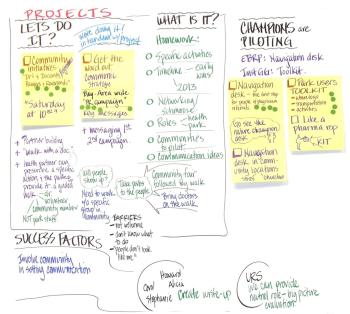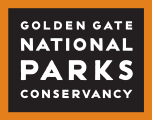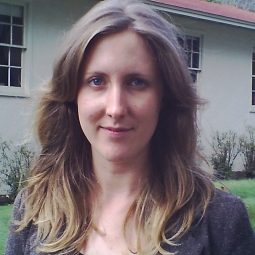Getting Started With Collective Impact
Publication Date
Image

Story/Content
I want to share one example of a process we have used to strengthen Healthy Parks, Healthy People practice in our region. The model is called “collective impact” and it is gaining traction around the country. We first heard about collective impact in Stanford Social Innovation Review (SSIR) and have been implementing it ever since.
Healthy Parks, Healthy People (HPHP) doesn’t refer to any one program. Originally a messaging campaign adopted by Parks Victoria in Australia, HPHP serves as an umbrella for any and all activities that draw a connection between public lands and human health.
For the past several years, parks all over the globe have been working to put this concept into practice, figuring out what it means by reaching out to unfamiliar partners and testing new programs and practices. Here in the Bay Area, we saw this happening to varying degrees of success. There was a fair amount of friendly competition as different agencies were tried to solve different pieces of the HPHP puzzle. Here at the Institute, we thought creating a more formalized community of practice could create a rising tide to lift all boats. But more than just sharing information with each other, we believed there may be some things we could only achieve if we tackled them together—an elephant in the room we might only move if we each put a hand on it.
Beginning in June 2012, we launched a series of monthly meetings that were very carefully crafted to help all park and public land agencies in the Bay Area to realize a common health agenda. Participants spanned parks and public lands, public health, private healthcare, and community advocacy groups.
Get Others Excited
Our first meeting was an invitation to play in the kiddie pool, giving our participants an opportunity to see if this kind of collaborative work was for them. We asked participants to think about areas in their HPHP practice where they were struggling to make traction on their own as a single organization. We shared those—which ranged from addressing transportation needs to using the right language to communicate with local communities—and then broke into groups to tease out what some collaborative solutions in those areas might look like. At our meeting’s close, we invited folks to continue the conversation by joining our series of monthly strategy meetings and craft an HPHP agenda that would move our entire region forward. Of the 50+ participants in this meeting, about 12 organizations committed to meeting monthly with us to create the initiative from scratch.
Define a Clear Target
At the next session with this committed leadership team, we mapped out all of our current activities and identified gaps. We started to see that we weren’t sure if our HPHP activities were reaching those communities that could benefit the most from healthy activities in our parks. And to be honest, we didn’t know those communities very well. We also recognized that, so far, our new HPHP regional collaboration had mostly attracted interested park actors but not as many health or community leaders. We guessed that we might not yet be attracting the right health stakeholders because we didn’t have something really concrete to offer yet from the park side and took that into account as we proposed activities we might take on together.
At our third session, we tried to more concretely articulate our purpose statement in coming together. We recognized that we could not take on all HPHP principles at once, so we chose a defined target. There is evidence that park prescriptions most benefit communities of low income and traditionally low access to parks. These are often also communities with the most health disparity and at the highest risk of chronic health problems. We decided that, to really make an impact with HPHP, we were going to prioritize our activities to serve those communities with high health risk first.
Start Something Tangible
With this target now in place, we had a clear outcome to strategize toward: increase the wellbeing of high health need communities through regular use and enjoyment of our parks. This statement, though simple, clarified our audience (high health needs first) and the type of behavior change we were aiming for (prioritize enjoyment rather than rigorous activity; regular use rather than one-off or semi-annual events).
We debated several proposals for “first step, low-hanging fruit” activities we could take on together. We judged them against a set of criteria we created to help us stick close to our target. After much brainstorm and debate, we agreed that the best first step we could take was to commit to offering consistent, culturally relevant programing designed for first-time park users that health care providers could prescribe just as easily as a drug you could pick up at Walgreens. We thought, how incredible would it be for this to take place in every park and open space in the Bay Area at a time that works for residents and is consistent? The Director of Maternal and Child Health at the San Francisco Department of Public Health agreed that this targeted programming would be a huge offering to the healthcare and public health community in our region. This became our agenda for 2013.
The Power of Collective Impact
Our “warm-welcome” HPHP park programming now takes place the first Saturday of every month in over 23 park sites around the Bay Area with over thirty agencies and organizations on board. Some things are standardized, like the way we measure participation and program outcomes, but in many ways the programming itself is varied, as well as the recruitment strategy, so we are able to compare different approaches in different communities, evaluate and improve what we are doing.
Just to tease out the timeline: within two months we were committed to a target—the change or outcome we were trying to seek together. Within about four months we had committed to an agenda for action and a timeline. And after twelve months we are moving full steam ahead, practicing and measuring our progress. This group of over twenty park agencies and a dozen health and community supporters decided that it wanted to create an MOU that would hold us accountable to this agenda through 2015. All of this was driven by the members of the collaborative; as the facilitative leaders, we committed to holding the process and asking the right questions at the right times.
Friends and Allies
If you are looking to create a collective impact collaboration for your social issue or cause, know that you’ve got allies behind you. Click here for a summary of different programs we modeled our own effort on. While it may not be exactly clear which “low-hanging fruit” your community will take on right away, we are confident that you can get started with only the resources you have at hand. Once you share a commitment to improvement with the right stakeholders and have set a few ways you plan to measure your success and hold yourselves accountable, taking meaningful action comes easily.


